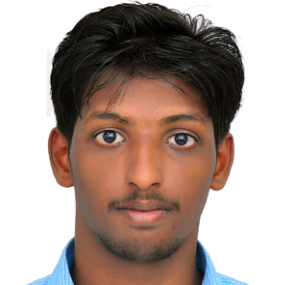
Praveen T.
Work place: National Institute of Technology (NIT) - Puducherry, Computer Science and Engineering, Karaikal, India
E-mail: tp14393@gmail.com
Website:
Research Interests: Computer systems and computational processes, Computational Learning Theory, Computer Networks, Network Architecture, Network Security
Biography
Praveen T. has completed his B.Tech in Computer Science and Engineering from National Institute of Technology (NIT) Puducherry, Karaikal, India. His research interests include soft Computing, Machine learning, Computer Networks, Artificial Intelligence and Cryptography. He has presented lots of papers on National and International Conferences.
Author Articles
Multi-Objective Memetic Algorithm for FPGA Placement Using Parallel Genetic Annealing
By Praveen T. Arun Raj Kumar P.
DOI: https://doi.org/10.5815/ijisa.2016.04.07, Pub. Date: 8 Apr. 2016
Due to advancement in reconfigurable computing, Field Programmable Gate Array (FPGA) has gained significance due to its low cost and fast prototyping. Parallelism, specialization, and hardware level adaptation, are the key features of reconfigurable computing. FPGA is a programmable chip that can be configured or reconfigured by the designer, to implement any digital circuit. One major challenge in FPGA design is the Placement problem. In this placement phase, the logic functions are assigned to specific cells of the circuit. The quality of the placement of the logic blocks determines the overall performance of the logic implemented in the circuits. The Placement of FPGA is a Multi-Objective Optimization problem that primarily involves minimization of three or more objective functions. In this paper, we propose a novel strategy to solve the FPGA placement problem using Non-dominated Sorting Genetic Algorithm (NSGA-II) and Simulated Annealing technique. Experiments were conducted in Multicore Processors and metrics such as CPU time were measured to test the efficiency of the proposed algorithm. From the experimental results, it is evident that the proposed algorithm reduces the CPU consumption time to an average of 15% as compared to the Genetic Algorithm, 12% as compared to the Simulated Annealing, and approximately 6% as compared to the Genetic Annealing algorithm.
[...] Read more.Other Articles
Subscribe to receive issue release notifications and newsletters from MECS Press journals